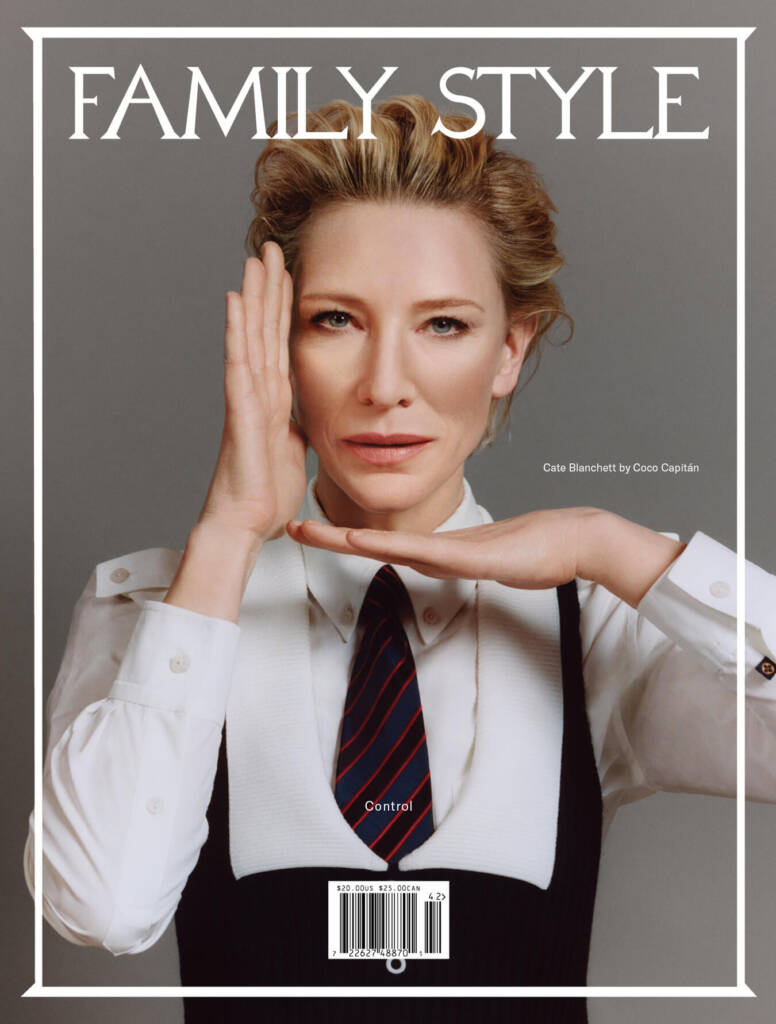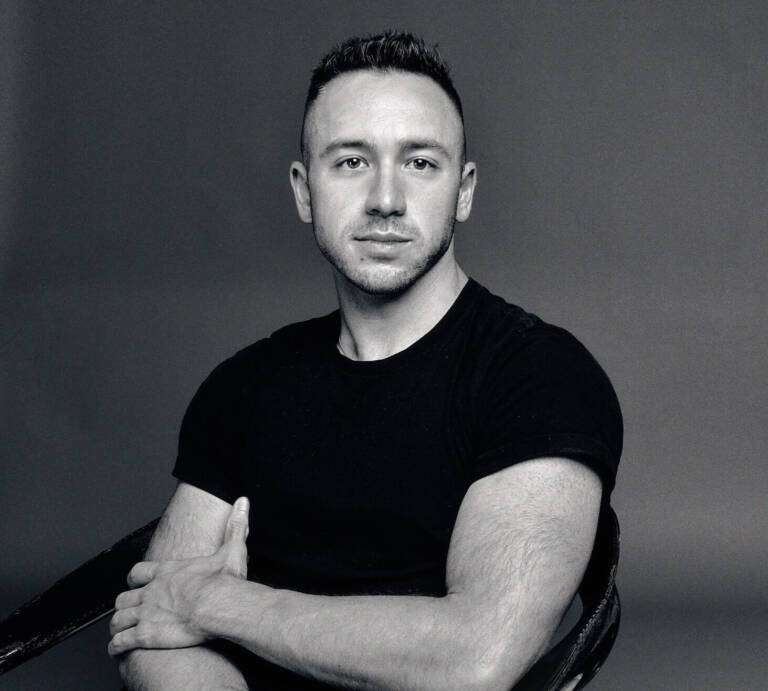
CATE BLANCHETT
Photography by COCO CAPITÁN

CHLOË SEVIGNY
Photography by SARAH BLAIS
Family Style isn’t just a magazine—it’s a take-home dinner party in print. Founded and edited by Joshua Glass, the publication serves up a thoughtful, multi-course experience where food and fashion share the table as equals. Whether it’s a feature on must-see exhibitions or a spotlight on hand-crafted furniture to gather your guests around, Glass curates each issue like a perfectly composed meal—flavorful, layered, and deeply considered.
For Glass, making a magazine is not just about publishing stories—it’s about building a world. Last May, he debuted Takeaway, a spin-off project that he affectionately calls “the Miu Miu to Family Style’s Prada.” Geared toward the stylish, scene-savvy girls of New York’s Lower East Side, Takeaway channels a more playful, rebellious voice—another outlet for Glass to explore storytelling on his own terms, guided by his own instincts.
In this conversation, our editor-in-chief sits down with Glass to talk about building a media brand rooted in personal values, and what it takes to create stories that leave readers not just entertained, but fulfilled—long after the last page is turned.
Sasha Kovaleva: You’ve once described Family Style as an “imaginary dinner party”, such a beautiful concept. If you could invite absolutely anyone, knowing they’d say yes, who would be at your dream table?
Joshua Glass: That’s a question I often think about in relation to others, but it’s challenging for me to answer for myself! A good dinner party is all about variety. Would I want to dine with the divas of yesterday? Of course. Would they make for the most enriching table? Likely not. I would, of course, need a visual artist to start our conversation—and who better than Basquiat, whose 1980s dinner parties helped define Downtown Manhattan? I’d pair him with Jonathan Anderson, who referenced Basquiat and his crew of out-on-the-towners in his Dior debut this June. Joining us would be someone from film and TV—perhaps Mia Goth, whose exquisite weirdness would surely delight all the guests, and the young British actor Damson Idris, who has suddenly made all of us interested in race car driving. Rounding out our six-top (you always need two table heads) would be the writer and philosopher Simone de Beauvoir—to read us all to filth.
SK: Could you tell us a bit more about the concept behind your new publication, Takeaway? What are your goals for the magazine?
JG: I describe Takeaway as the Miu Miu to Family Style’s Prada. It’s not about money—if you think about both brands, their price tags are nearly identical. The distinction, however, is their points of view and the people they’re speaking to. Prada is cultural and luxurious, whereas Miu Miu is young and edgy, speaking to the next generation. I wanted a different approach to take on the topics we don’t typically touch on in Family Style: music, entertainment, and youth culture. Takeaway is fast and crunchy; it’s a moving target.
SK: You mentioned seeing an opportunity to build a media brand that functions not only as a beautiful print object but “also beyond that.” What does beyond look like to you? How do you envision Family Style and Takeaway evolving across platforms or formats in the future?
JG: Don’t get me wrong, I love print—making a magazine fulfills my heart and replenishes my soul no matter how stressful it is. However, in 2025 a magazine has to be more than just a physical magazine, cool editorials, and interesting articles. More than unique social content and web features. Because both Family Style and Takeaway are rooted in food’s amazing quality of bringing people together, our curated experiences really speak for themselves and set us apart from our peers. Between Family Style’s bespoke dinners and Takeaway’s dance parties, we are fostering two unique communities, building one-of-a-kind events with the creativity and precision of a fashion editorial.

